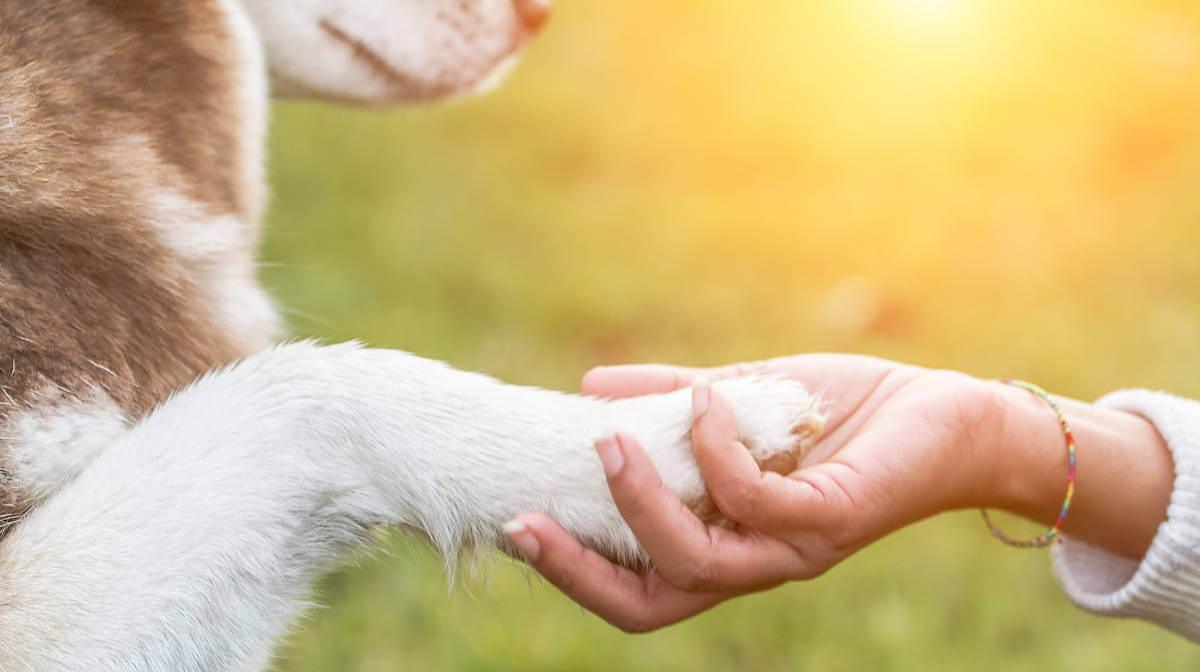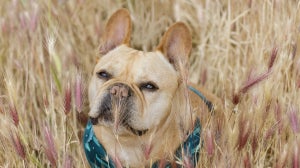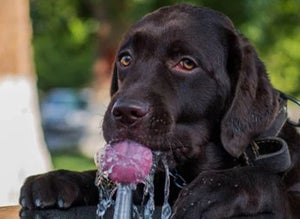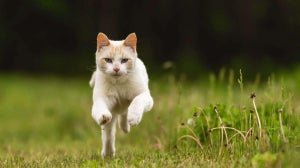
It is important for you to know how to care your your dog's paws
While humans protect their feet from injury with shoes, dogs have natural protection provided by their paw pads. However, whether it’s bounding around joyfully in fields or chasing hurriedly after their favourite chew toy, dogs are incredibly active animals and their paws are subjected to a lot of wear every day. This makes it important for you to know how to care for your dog’s paws.
Here, James Wellbeloved explores dog paw pads and ways to care for your pet pooch’s feet. This includes clipping nails and using balm for dog paws.
WHAT ARE DOG PAW PADS?
A dog’s paw pads are layers of fatty tissue, with a thinner layer of skin covering them. These help to insulate your dog’s paws from cold or hot surfaces, aid balance and absorb shock from the impact of running and jumping.
The feel of a dog’s paws can vary greatly. While some will have smooth paws, exposure to coarser terrain can cause some dog’s paws to become calloused. Furthermore, your dog’s paw pads can become blistered or torn, particularly by walking on surfaces that are too hot or rough. Caring properly for your pet’s paws is important to avoid this.
BE CAREFUL WHERE YOUR DOG WALKS
The first step to for caring your dog’s paws is prevention. The surfaces your dog walks on can seriously impact the health of their paw pads. You must be wary of hot pavements in the summer and of floors recently cleaned with potentially harmful chemicals; these can be highly damaging to your dog’s paws, sometimes even causing blistering.
USE BALM FOR DOG PAWS
Much like human feet, a dog’s paws can become dry and cracked. Moisturising is a great way to prevent this happening, however you must never use human moisturiser, as this can soften the pads too much and cause injury. Instead, ask your vet to recommend a specialised balm for dog paws. This will help to smooth the surface and reduce dryness.
Rubbing the balm into your dog’s paws is also a good opportunity to give a paw massage. This will help to improve circulation in your dog’s paws and promote healthy paw pads.
CARE FOR BETWEEN THE PAW PADS
When caring for your dog’s paws, remember to also check between the pads, as debris commonly becomes lodged in these places. This can be easily removed using a pair of tweezers, although you must take care to be gentle with your pet when doing so.
You should also check the length of fur growing between dog’s paw pads. Although not all, some dogs have significant amounts of hair growing on their feet. This can become matted and cause them pain, so it is often a good idea to trim this hair. If you don’t feel confident doing this yourself, a dog groomer or vet will be able to do this for you.
CLIP YOUR DOG’S NAILS
Some dogs can keep their nails at comfortable lengths through normal exercise – movement on rough/hard surfaces such as pavements can help to gradually file them down. Nevertheless, some dogs will need help maintaining nail length by clipping them. While some dogs may not be thrilled about having their nails clipped, cutting a dog’s nails can be a vital part of caring for them and their paws. A dog’s claws provide protection for their paw pads and so maintaining them is important for the health of the entire foot.
When clipping dog’s nails, you need to be careful not to cut the ‘quick’. This is the pink section of a dog’s nails that supplies blood to the claw. It can cause pain to your dog if you cut it and make the process more distressing than it needs be. If you do cut the quick, stop the bleeding as best you can and it may be necessary to take your pet to a vet.
When cutting dogs’ nails, follow these steps:
Hold their foot with a firm but gentle grip
Snip off a small bit at the end of each nail
If the nail feels spongy, stop immediately – this indicates you might be cutting too far up and are in danger of cutting the quick
Give your dog a treat at the end to build a positive association with having their nails clipped
When doing this, you must always use trimmers designed for cutting dogs’ nails. Never use clippers designed for humans or any other animal as this can lead to injury. Additionally, if you are unsure about clipping your dog’s nails, ask a vet for guidance or even to do it for you. This may also be necessary if your dog is particularly averse to the process, meaning they move or bite when you attempt to trim their claws.
So, there we have James Wellbeloved’s guide to caring for your dog’s paws. If you are worried that your dog may have a serious injury or issue with their paws, consult your vet for professional advice.

Related Articles







